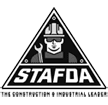
Addressing Common Issues with Girder Clamps in Construction Projects
In the construction industry, the reliability of structural components is paramount, and this is where Girder Clamps play a critical role. According to a report by Grand View Research, the global construction clamp market is expected to reach USD 2.5 billion by 2025, reflecting the increasing reliance on precise and durable joining solutions in various architectural applications.

However, despite their widespread use, Girder Clamps can present several common issues that could potentially hinder construction efficiency and safety. Identifying and addressing these challenges—such as misalignment, inadequate load capacity, and compatibility with different materials—is essential for ensuring the structural integrity and longevity of construction projects.
This blog aims to provide insights and practical solutions on how to effectively navigate these issues with Girder Clamps, ensuring that construction efforts proceed smoothly and safely.
Common Misconceptions About Girder Clamps: What You Need to Know
When it comes to girder clamps in construction projects, several misconceptions can lead to improper use and safety hazards. One common belief is that all girder clamps are interchangeable, regardless of the specific application or load requirements. In reality, different clamps are designed for varying purposes, and choosing the wrong type can compromise structural integrity. It’s crucial for contractors to understand the specifications of each clamp and select the appropriate one based on the job at hand.
Another misconception is that girder clamps require minimal maintenance once installed. However, regular inspections and maintenance are essential to ensure their effectiveness. Environmental conditions, such as exposure to corrosive elements or heavy loads, can significantly affect the performance of the clamps over time. Understanding that routine checks and appropriate care can extend the lifespan and reliability of girder clamps is vital for any project manager aiming for a safe and successful construction site.

Top Three Types of Girder Clamps Used in Modern Construction Projects
Girder clamps are essential tools in modern construction projects, ensuring stability and safety while handling heavy loads. Among the various types available, three stand out for their effectiveness and versatility: the U-shaped girder clamp, the toggle clamp, and the locking clamp. According to the Construction Industry Institute, the use of appropriate lifting tools, like girder clamps, can reduce accidents related to hoisting and enhance overall project efficiency by up to 30%.
The U-shaped girder clamp, often used for securing beams and girders, is praised for its ability to distribute weight evenly, thereby minimizing stress points. This type is vital for ensuring that heavy components are positioned correctly during the assembly phase. Meanwhile, toggle clamps are favored for their rapid and secure gripping mechanism, making them suitable for quick adjustments and frequent use in dynamic construction environments. A report from the American Society of Civil Engineers indicates that using toggle clamps can significantly speed up construction timelines, with reductions of about 15% in certain applications.
Lastly, locking clamps provide an essential solution for scenarios requiring a high degree of security and stability. Their design allows for a robust grip on surfaces, which is critical during high-load operations. This feature is particularly beneficial in high-rise construction, where safety and efficiency are paramount. As industry standards evolve, the consistent adoption of these top three girder clamps in construction sectors will likely contribute to safer and more productive work environments.
Addressing Common Issues with Girder Clamps in Construction Projects - Top Three Types of Girder Clamps Used in Modern Construction Projects
| Type of Girder Clamp | Material | Load Capacity | Common Applications | Key Features |
|---|---|---|---|---|
| Fixed Girder Clamp | Steel | Up to 5,000 lbs | Bridge construction, Structural framing | High strength, Permanent installation |
| Adjustable Girder Clamp | Aluminum | Up to 3,000 lbs | Temporary supports, Scaffolding | Lightweight, Versatile |
| Slip-On Girder Clamp | Stainless Steel | Up to 4,500 lbs | Industrial applications, Rigging | Corrosion-resistant, Easy installation |
Key Factors Impacting the Performance of Girder Clamps
When dealing with girder clamps in construction, understanding the key factors that impact their performance is essential for the integrity and safety of structural projects. One of the primary considerations is the configuration and reinforcement details of the clamps. Properly designed connecting zones can significantly enhance the strength of precast components, ensuring they withstand the demands of load-bearing applications. Thicker reinforcement bars can lead to improved yield strength, which is critical in reducing the risk of failure during construction.
Tips for optimizing girder clamp performance include selecting the appropriate clamp sizes based on load requirements, and thoroughly checking the installation against structural guidelines. Additionally, addressing any discrepancies in the reinforcement details before construction begins can help prevent complications later in the project. It's important to regularly inspect the clamps throughout the construction phase to identify potential issues early on.
Finally, consider the impact of environmental factors, such as noise and vibration, which can affect the overall stability of girder clamps. Ensuring that installation locations are assessed for external influences can help maintain performance throughout the project's lifecycle. Always consult with engineering professionals when designing and implementing systems involving girder clamps to achieve the best results.

Effective Solutions for Overcoming Girder Clamp Installation Challenges
Girder clamps are essential components in construction projects, enabling the secure connection of girders and beams. However, installation challenges frequently arise, potentially jeopardizing the overall integrity of the structure. Addressing these challenges requires a comprehensive approach that not only identifies common issues but also implements effective solutions. One prevalent problem is misalignment during installation, which can lead to uneven loads and future structural concerns. To combat this, utilizing laser alignment tools can provide precision and ensure that all clamps are fitted accurately from the onset.
Another common issue is the lack of proper torque specifications, leading to under-tightening or over-tightening of the clamps. To overcome this, crews should be trained on the importance of following manufacturer guidelines meticulously. Using calibrated torque wrenches can help maintain the right tension, ensuring that each clamp secures the girders as intended. Additionally, regular inspections can catch any discrepancies early, allowing for timely adjustments to maintain structural integrity throughout the project's lifecycle. By embracing these effective solutions, construction teams can streamline the installation process of girder clamps and enhance the stability and safety of their projects.
Maintenance Tips to Prolong the Life of Girder Clamps in Construction
Girder clamps are essential components in construction projects, providing stability and support for heavy structures. However, improper maintenance can lead to common issues such as wear and tear, decreased load capacity, and potential safety hazards. To ensure the longevity of girder clamps, regular inspection and maintenance are crucial. Industry reports suggest that regular assessments can extend the life of the clamps by up to 30%, significantly reducing costs associated with replacements and potential project delays.
Effective maintenance practices include cleaning the clamps regularly to remove dirt and debris, which can cause corrosion and weaken the materials. It is also advisable to lubricate moving parts and to check for any signs of damage or fatigue. When clamps are used for prolonged periods, it is recommended to perform load testing every six months, as routine checks can uncover hidden issues before they escalate. Moreover, staying informed about the latest regulations regarding safety standards in construction sites ensures compliance and optimal performance of girder clamps, mirroring regulations found in other sectors, such as the stringent compliance requirements for silage clamp storage.
By implementing these maintenance tips, construction projects can run more safely and efficiently, minimizing risks and maximizing productivity.
Related Posts
-

Elevating Global Standards: The Rise of Premium Chain Come Along from China
-

Maximize Efficiency and Safety in Lifting: The Growing Demand for Hand Chain Hoists in Global Markets
-

5 Essential Benefits of Choosing Air Hoists for Your Industrial Operations
-

Understanding Electric Hoist Specifications for Global Buyers
-

How to Choose the Right Chain Hoist for Your Industrial Needs Based on Expert Insights
-

How to Identify Quality Manufacturers for Best Electric Hoist Winches Using Industry Insights
Copyright ©2024 Elephant Lifting Products | All rights reserved.
38381 N Robert Wilson Rd, Gonzales, LA 70737 USA
Toll Free: (888) 844-6113 | Phone: (225) 644-6113 | Fax: (225) 644-6695
Email: sale@floralift.org




